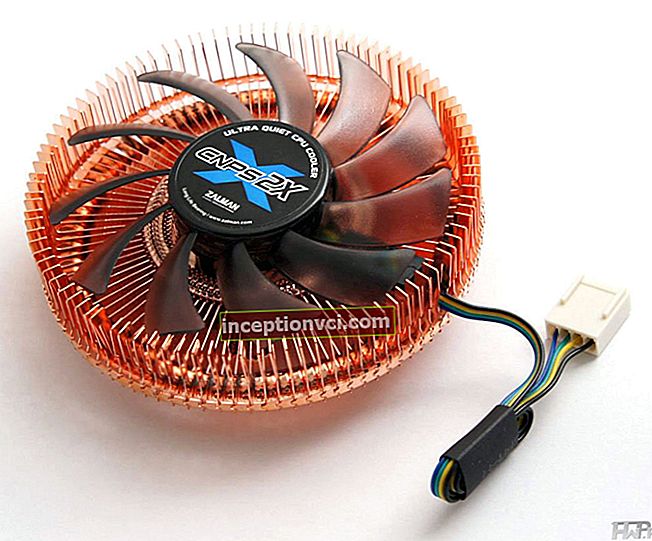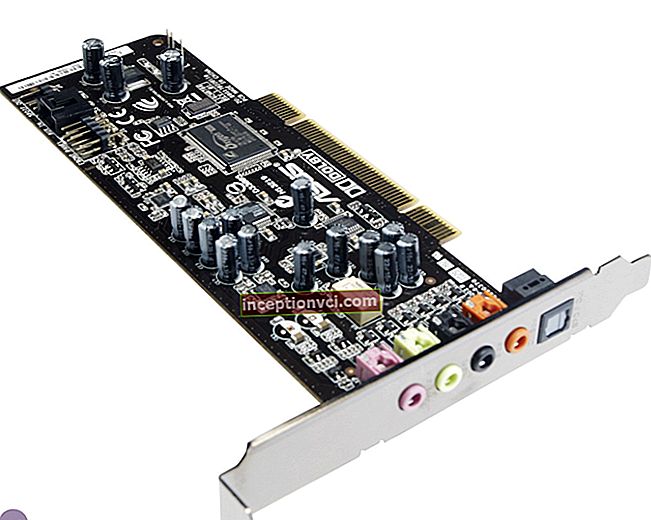Sound card Asus Xonar DS
Until recently, I only recognized Creative's brand sound cards as the tool to bring "decent" sound to the desktop segment. The years spent on the SB-Live have made me used to this company and its very good sound cards, although I am quite open to all sorts of innovations. It's so convenient for a person - why search for anything and combine, if you can have an old, proven audio card that will provide good sound, without the risk that something will stop working or you will not be satisfied.
Such reasoning is not suitable for a person who, by duty, must be in contact with all kinds of technical innovations. After all, how many times did entire platforms change along with graphic cards from different manufacturers, and only SB-Live switched from board to board. As it turned out, competition is on the rise, and it seems that competitors have a desire to take over the crown, or at least give a fierce battle to defeat the consumer's choice. Better later than never.

To properly perform the sound card tests, it is necessary to have equipment of the appropriate class, which, unfortunately, I do not have. Loudspeakers, as well as an AV amplifier, cost a lot, and such costs at the moment are too expensive for me. Therefore, first of all, I will focus on stereo sound. To test the signal and capabilities of the audio card, I will use a borrowed 5.1 acoustics set. It is rather difficult to give an objective assessment of the performance of a sound card and to argue that this product sounds good or bad too. Each of us hears sound differently, and above all, neutrality standards must be taken into account.
Neutral sound is the sound that is closest to the original, if, for example, we like to listen to "live" classical music, then after returning home and turning on the CD, we should feel feelings as close as possible to what we are. we experience during a concert sitting in the hall of the conservatory. Unfortunately, everything is not so simple, and even equipment bought for a lot of money has its drawbacks.
But, for something we have distracted from our hero, so let's go down to earth and see what he is capable of.
The packing box is small.


Also, like the Xonar STX, it has a cardboard "flap", behind which, however, you cannot see the insides of the box.



The package includes:
- sound card ASUS Xonar DS;
- user's manual;
- drivers (Windows XP 32/64, Vista 32/64);
- a small cover plate;
- adapter for connecting Toslink optics.


The sound card has a PCI connection standard. The manufacturer also offers a model with similar characteristics in its lineup, which is installed in a PCI-E slot.
The card itself is small in size, its installation will not interfere inside the case.



The set of connectors on the board looks like this (see the photo below).

On the left we have "Line In"or signal input for connecting various types of devices (for example, a microphone),"Out port", which is responsible for connecting headphones, speakers, etc., goes further"Sorround out"- analog output for connecting a multichannel system, next, one more analog output"Center / Subwoofer out"- I think there is no need to explain why it is needed, and the last is the digital port" S / PDIF Out".
In addition, directly on the printed circuit board of the card, we will find the often used "Front Panel Audio" - an output to an additional panel, which can be equipped with a system unit, "Aux Input Header", which is necessary to connect analog equipment (for example, a TV tuner), and the last "S / PDIF Out Header" connector, which provides the ability to connect a video card with HDMI support. This connection requires a cable that is not included in the package.

The main control circuit of the sound card is the AV200 chip. Like the older AV100 model, it is 100% DirectSound and DirectSound3D compatible. It can also emulate EAX 2.0 / 1.0.

A set of logic, shown in the photo below, is engaged in the conversion of analog signals:


The main technical characteristics also include the bit width of the DAC, here it is equal to 24 bits, the maximum frequency of which in stereo mode is 192 kHz.
The software application is nothing more than the "Xonar Audio Center", which, depending on the card model, is equipped with more or less options and add-ons.

The main menu is the main one, and after just a few clicks we "recognize" it so well that there should be no problems with navigation. On the right side is the volume control, and the SVN buttons - equalize audio output, and Mute - mute the volume.
There are only two options at the bottom - GX and HF. The first is the function of software communication with games, and the second means Hi-Fi - the factory setting for listening to music.
The menu after expanding looks like this:

Here you will find graphical speaker icons and setting options.
Audio Channel - selection of the number of channels (from 2 to 8);
Sample Rate (sampling rate) - available in scale up to 192 kHz;
Analog out (Analog output) - select a sound source (speakers, headphones, etc.);
SPDIF Out - digital audio output with additional "correcting" functions, in the style of "Virtual Speaker Shifter" and "Digital Sound Theater".
The settings for the analog output of the card are shown in the photo below.

Most of the settings will be intuitive to us. The "FP Headphone" and "FP 2 Speakers" tabs are used to switch the sound source to which we have a connection.
We turn on DTS, the menu switches to a slightly different graphics mode, and several additional options are added.
When we turn on the "DTS Neo PC" mode, then in the graphics window there will be available options that were previously unavailable to us. The knob located on the right side of the window controls the signal level of the front or rear speakers, depending on the current settings.
Switching to the next tab - mixer, we open the panel for fine tuning the volume of each individual channel.
Effect menu - frequency control, where there are many settings that allow you to "play with the sound", some of them are even interesting, although I am a supporter of the original signal, from time to time you can have a little fun.
Karaoke - this function includes the removal of the corresponding frequencies, which should lead to the removal of vocals from the audio recording or adding our own material, we can also overlay sound in the form of "echo" here.
FlexBass - This option allows you to assign (program) the selected frequency to a specific speaker. You can completely remove the selected bass range from the speakers and assign it to a completely different speaker.
VocalFX is a bookmark created for the gaming environment, this option allows you to convert the voice from the microphone. This technology was first used in Creative EAX 5.0.
For technical analysis of sound, I will use the most famous and widely used program, which is RightMark Audio Analyzer v6.2.3. It can represent the detailed parameters of the sound card in synthetic form. The result is given in numbers, and in theory, the less distortion and more dynamics, or less offset from noise, will guarantee us that the reproduced sound is of better quality. I am not a supporter of "visually" looking at sound, although technical characteristics are also very important and can tell us a lot.
I know of many cases when audio devices with the worst parameters managed to play much more interestingly, although this was not always close to neutrality. To carry out the test, you need a cable, which, unfortunately, is not included in the package. This is not some kind of exotic cable, but an ordinary one, with plugs of the "Jack" type on both sides, such as shown in the picture.

We connect one end of the cable to the output of the sound card, and the other to the input of our audio device, then set the appropriate frequency in the program settings, and proceed to the beginning of testing. It would be nice if the cable was not too long, mine, for example, had a length of only 40 cm, I simply could not find a shorter one.
We can see how the synthetic test checks each frequency of our card in detail.

The RMAA estimate for frequency values is as follows.
16-bit / 48kHz:

16-bit / 96kHz:

24-bit / 48kHz:

24-bit / 96kHz:

Test platform:
system - Windows Vista 64bit;
sound card - Asus Xonar DS (buy from F.ua);
columns - Genius SW-HF5.1 5050, Altec Lansing ATP3 2.1;
headphones - Sennheiser HD380pro.
Before starting the listening test, I had to look again for more or less "decent" acoustics - at least 5.1. My task was to try, at least approximately, to describe the sound they reproduce in relation to the original "live" one. Several phone calls made it possible to borrow Genius speakers, which, while not high-end, should at least be better than my previous Creative speaker set, which I have some complaints about. One way or another, the description of 5.1 sound will be generalized in our case. When listening to CDs, which I know very well, and which I listen to several times a week, I will focus primarily on stereo effects. All effects and all sorts of sound "correctors" have been eliminated in order to describe the sound that the Xonar DS gives us as realistically as possible.
The list of what was used for testing is given below.
Audio CD:
Mike oldfield - “The Songs Of Distant Earth”, “Tubular Bells II”, “Tr3s Lunas”, “Guitars”, “Tubular Bells III”;
Schiller - "Weltreise", "Tag Und Nacht", "Leben";
Vibrasphere - “Exploring The Tributaries”, “Lungs Of Life”, “Landmark”;
Bon jovi - "Crossroad - Best Of";
Seal - "Seal IV", "System";
Pink floyd - “The Wall”, “The Final Cut”, “A Momentary Lapse of Reason”;
Metallica - "Michael Kamen with The San Francisco Symphony Orchestra";
Michael jackson - "Dangerous".
Games:
FarCry 2;
Grid;
Tomb Raider - Underworld;
Silent Hill - Homecoming.
DVD:
Transformers;
Harry Potter - Goblet of Fire;
Apocalypto;
Babylon A.D.
I'll start with a small minus, which I didn't like - we are talking about the separation of sound from the computer. After connecting and installing the drivers, I was surprised by the strange sounds that I heard in the headphones. A working hard drive, DVD drive, or even mouse movements could be heard while operating the system. It bothered me a lot, and I wondered, maybe Asus saved on something? Noises are practically inaudible when it comes to Genius or Altec speakers, since they did not pick up them, but they were clearly audible in the headphones. Fortunately, this only happens when the audio card is "idle", when we turn on an audio CD, game or video, the noise almost completely disappears. This nuance came as a big surprise to me, on the Internet, unfortunately, I did not find any information about this.
Mike oldfield plays very well, so much so that after a few minutes of listening to the records I know, I came to the conclusion that it makes no sense to buy expensive sound cards. The momentary surprise and charm begins to fade as I began to listen more closely to the boundaries of the range, great high tones - almost as good as in the Xonar STX card, do not have the same "flight", and some tracks Vibrasphere sometimes look too aggressive in the upper frequency range, and Schiller, at times, played too gloomily. In high-end headphones, even the inexperienced listener should hear this difference. Looking for more details of the sound "above" I came to the positive conclusion that when it comes to stereo, the inexpensive Xonar does its job very well - you can hear the breath in the Oldfield recordings and the width of the stage when listening to Pink Floyd, the album "The Wall" ... All of this is a little confusing, is it really that good?
Well, not quite like that, for example, in the album "Guitars "Mike Oldfield, there is a very interesting moment in the sound of an electric guitar in space, and here I did not hear the playing as it did with the STX. It was as if everything was beautiful and correct, but I lacked the dot above the “i”, because sometimes the aggressive guitar was not the way I remembered it.However, it cannot be said that everything was bad, it was just different - the lack of dynamics manifested itself in a different representation of the sound picture.
Medium frequencies without remarks. In this range, Xonar DS models should not be ashamed, voice Sealsounding from the CD looked just as good as the STX. Here, perhaps, the only thing missing is "predation", since the more expensive card reproduces the sound more aggressively, without wrapping it in cotton, and without trying to embellish it. Yes, this is perhaps the best comparison, but it is not easy to understand. In rock music and heavy metal, you can find fault with the fact that while listening to the band's albums Metallica and Bon jovi at a low or medium volume level, everything looks very good, and the problem arises when the knob is turned sharply to the right - it seems that the sound card cannot cope with an excess of playing instruments at a volume level higher than 70-80 percent. Despite the absence of a headphone amplifier (the STX has a magnificent specimen that can "rip" any headphones), the card transmits the signal loudly and we will not be able to sit in Sennheiser HD380pro headphones with volume settings at 80 percent for a long time. At least for me it turned out to be a daunting task. Michael jackson and album "Dangerous" is the quintessence of powerful pop sounds, very aggressive and strong electronic percussion, and here the middle comes to the fore, which should decisively attack. It doesn't sound as good as in the STX model, but considering the price of the sound card, it turns out that there is simply nothing to complain about.
Moving on to the basses, of course, the dynamic pieces were the first to go into battle Vibrasphereas well as the twelfth track from the album "The Songs of Distant Earth "Mike Oldfieldwhich checks the range perfectly. For many speakers, what Mike Oldfield I "placed" in this work, just too tough - the last speakers I tested were Wharfedale Evo 2.10, which cost a lot of money, and so they did not play one hundred percent bass in this recording. Not every speaker will be able to play this frequency range, and, as it turned out, small and beautiful-looking British "monitors" can do everything except bass. The result is great sound for aspiring audiophiles. Let's get back to our hero.
At low volume levels, everything looks good, the card starts to get lost a little only at high volume levels. Well-stretched bass in the pieces from the album Vibrasphere is not an easy material for sound cards, such a well-known and respected of them as Realtek HD, in general, plays, and even not bad, but the distortion leaves much to be desired. Xonar DS copes with this task noticeably better, being marginally behind the more expensive and technically advanced STX. Bass sounds from CDs Pink floydgive, at least to some extent, the feeling of being in touch with the instrument, and well-signaled aggression sometimes looks too exaggerated, and at times is not enough for a complete sense of satisfaction.
In games, the situation is somewhat more complicated due to the set of columns used. The Genius speaker system I use is a typical device for those who want to enjoy at least a little bit of 5.1-channel sound while sitting in front of a computer. I had to sit and play a little at the computer to hear any difference in sound, especially in relation to STX. The sound circuitry is so precise that you don't have to look for the little nuances that Genius speakers are not designed for. Playing audio in games Grid, namely - the work of the engine and impacts on the bump stop, or a more subtle sound of the surrounding world in the game Tomb Raider - Underworld, do not give rise to any complaints. Shots in the game FarCry 2, or my favorite horror movie Silent Hill - Homecoming only confirm the correct operation with acoustics. The interesting tweak settings included in the software will certainly come in handy here.“Fun” with the voice acting options is fun and it’s always fun to see how the sound will sound in this (modified) version.
Movies tend to be surround sound and it is difficult to find many flaws here. All special effects of the film Transformers like the required power and bass strength, as well as the width of the stage shown by the rear speakers together with the subwoofer, have their own charm, even in this class of speakers. It is a pity that I do not have the ability to connect the sound card to high-end equipment, then the difference would be easy to understand. The situation does not change in other films, although they do not have as many sound effects as the soundtrack from the film. Transformers. Sometimes, with your eyes closed, you can “immerse yourself” in the movie and enjoy the sounds, for this we will need to turn the volume control to the “upper” level. In general, I cannot say anything bad in this test, although I am a lover of stereo sound, despite this, without an unambiguous and direct comparison, it is difficult for me to find any disadvantages. The temporarily connected Realtek HD creates a slightly sleepy impression, this is when the sound sounds without aggression, and the positioning of the special effects on the rear speakers does not look very expressive. This is caused by the presence of noise (at high volume), which only confirms the rationale for buying something better than an integrated sound card.
In conclusion, you must first of all decide whether the sound card is worth the money spent? In my opinion, resolutely yes! Firstly, it costs a little, and people who do not pay much attention to the sound should still see the difference compared to the integrated audio chip, and I think that about 75 percent of them will not want to go back to the integrated sound installed on the motherboard. board. The quantum leap is huge, but you have to adhere to the hardware match condition that will be paired with the card. Connected computer speakers cannot be of poor quality. If we want to hear the difference, then we need to choose devices of a higher class - preferably 2.1 or 5.1.
What's the easiest way to recognize a good quality audio card? The simplest way that immediately catches the eye is the absence of any interference from the computer, you can "turn" all the regulators to the maximum, but we will continue to hear complete silence - at this moment, it is better not to turn on the music, you can "go deaf" ... Listening to silence on the Asus Xonar DS, it turns out that it simply does not exist, and as I wrote above, this moment only applies to an inactive card, the problem will disappear when a signal is sent to the card. As you can imagine, you cannot have everything for such a price. The sound itself reproduced by the audio card is of very good quality, and even music lovers with good hearing will confirm that something that the Xonar DS offers for the money looks very decent.
Should you pay extra for a more expensive model than the Asus Xonar DS? I cannot give an answer to this question, since I have not heard another card in comparison. Although I can quite simply answer the question “why do I need Xonar STX?” If someone listens to a lot of music and has the appropriate acoustic equipment, plus high-quality headphones, and also enjoys finding the smallest differences and nuances in your favorite recordings, then an expensive sound the card has a lot to show you.
Asus Xonar DS
Pros:
- good quality of the components used;
- very good sound;
- universal and understandable software;
- using EAX in games.
Minuses:
- weak separation from computer "interference".









